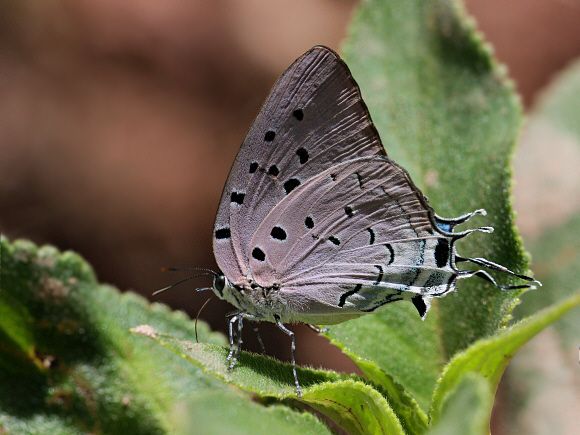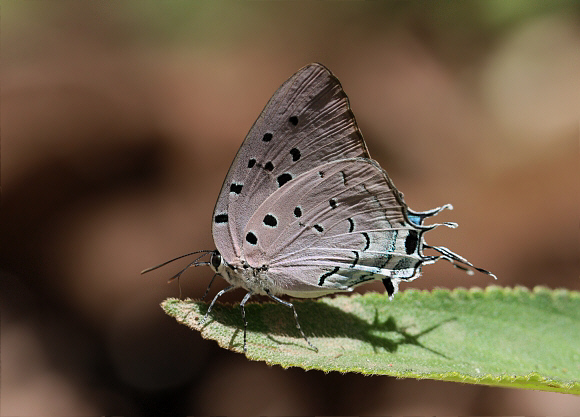
Introduction
Almost all neotropical Theclinae species are placed in the Eumaeini. The tribe is not particularly well represented in collections, so until fairly recently a high percentage remained unstudied, and were inappropriately filed away in the ‘convenience’ genus Thecla. Many taxonomists have attempted to rationalise the systematics of the Eumaeini, the most recent being Robbins who published a revision in 2004, reclassifying the taxa into 83 genera.
Currently there are 1058 known species. Taking into account their small size, secretive behaviour, and the great similarities between many species, it is estimated that about another 200 species probably remain to be discovered.
The genus Pseudolycaena comprises of just 2 species – damo from Central America, and marsyas which occurs from Colombia to Paraguay, and is also found on several Caribbean islands. Pseudolycaena marsyas is huge in comparison with most other hairstreaks, measuring almost 6cms in wingspan. The upper surface of the wings is metallic blue, although the hue varies according to location, from ultramarine in Caribbean forms, to turquoise-blue in Paraguay. In most forms the males have a falcate apex. All these forms are allocated to a single subspecies – Pseudolycaena marsyas marsyas. Both sexes are tailed.
Habitats
This species is found in disturbed semi-open forest habitats at altitudes between sea level and about 900m.
Lifecycle
To be completed.
Adult behaviour
The butterflies are usually encountered as singletons, and are typically found sitting on the foliage of bushes, herbaceous plants or grasses. Females are sometimes observed nectaring at flowers, but males are more commonly seen imbibing from the surface of leaves. They also imbibe at stems, presumably to feed on aphid secretions; but may possibly also sequester alkaloids from ergot (a type of fungus affecting stems and leaves).

